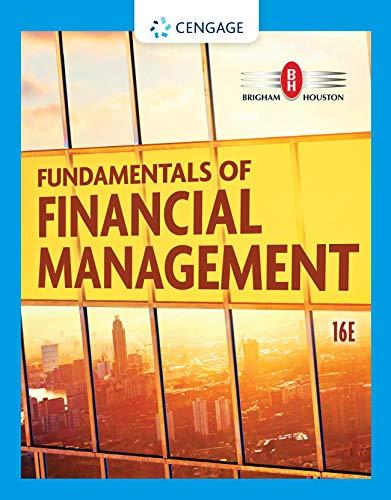Question
PLEASE EXPLAIN STEPS Aluminum Building Products Company (ABPC) is considering investing in either of the two mutually exclusive projects described as follows: Project 1. Buying
PLEASE EXPLAIN STEPS
Aluminum Building Products Company (ABPC) is considering investing in either of the two mutually exclusive projects described as follows: Project 1. Buying a new set of roll-forming tools for its existing roll forming line to introduce a new cladding product. After its introduction, the product will need to be promoted. This means that cash inflows from additional production will start sometime after and will gradually pick up in subsequent periods.
Project 2. Modifying its existing roll-forming line to increase productivity of its available range of cladding products. Cash inflows from additional production will start immediately and will reduce over time as the products move through their life cycle.
Sarah Brown, project manager of ABPC, has requested that you do the necessary financial analysis and give your opinion about which project ABPC should select. The projects are mutually exclusive and have the following net cash flow estimates:
| Year | Project 1 | Project 2 |
| 0 | ($200,000) | ($200,000) |
| 1 | 0 | 80,000 |
| 2 | 0 | 60,000 |
| 3 | 20,000 | 50,000 |
| 4 | 30,000 | 30,000 |
| 5 | 40,000 | 10,000 |
| 6 | 60,000 | 10,000 |
| 7 | 80,000 | 10,000 |
| 8 | 100,000 | 10,000 |
Both these projects have the same economic life of eight years and average risk characteristics. ABPCs weighted average cost of capital, or hurdle rate, is 6.5 percent.
1. Which project would you recommend Ms. Brown accept to maximize value of the firm? (Hint: Calculate and compare NPVs of both projects.)
2. What are the IRRs of each project? Which project should be chosen using IRR as the selection criterion?
3. Draw the NPV profiles of both projects. What is the approximate discount rate at which both projects would have the same NPV? What is that NPV?
4. Further market survey research indicates that both projects have higher-than- average risk and, hence, the risk-adjusted discount rate should be 7.5 percent. What happens to the ranking of the projects using NPV and IRR as the selection criteria? Explain the conflict in ranking, if any.
5. Answer questions (1) and (2) again, assuming the projects are independent of each other.
6. What is the payback period (PBP) of Project 1 and Project 2?
7. What is the discounted payback period (PBP) of Project 1 and Project 2?
8. What is the modified internal rate of return (MIRR) of Project 1 and Project 2?
9. What is the Profitability Index of Project 1 and Project 2?
10. Explain how to improve capital budgeting decisions with real options?
Step by Step Solution
There are 3 Steps involved in it
Step: 1

Get Instant Access to Expert-Tailored Solutions
See step-by-step solutions with expert insights and AI powered tools for academic success
Step: 2

Step: 3

Ace Your Homework with AI
Get the answers you need in no time with our AI-driven, step-by-step assistance
Get Started


